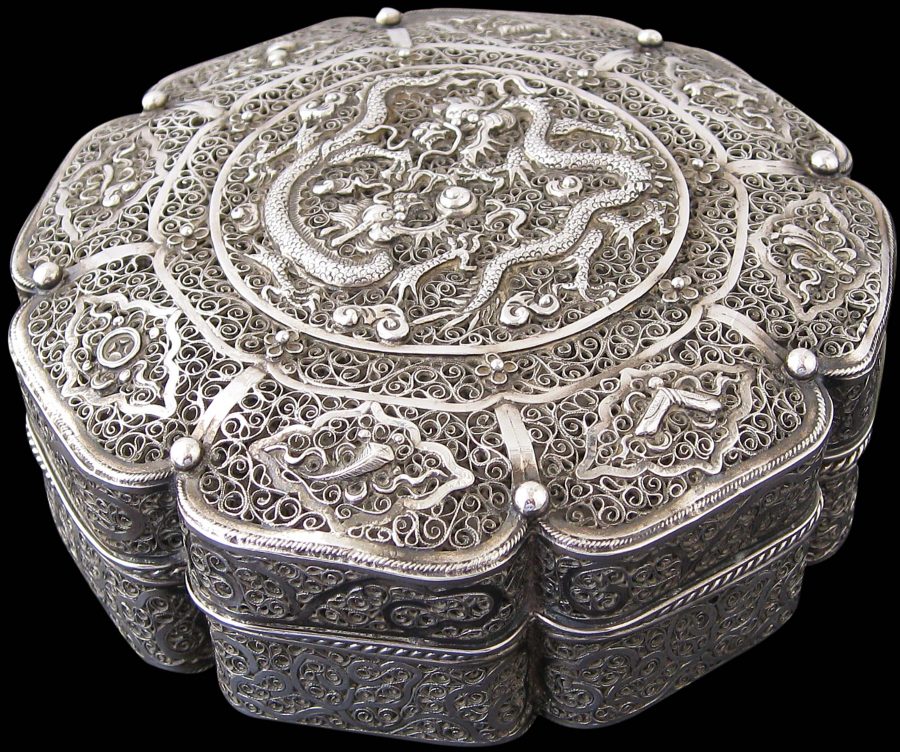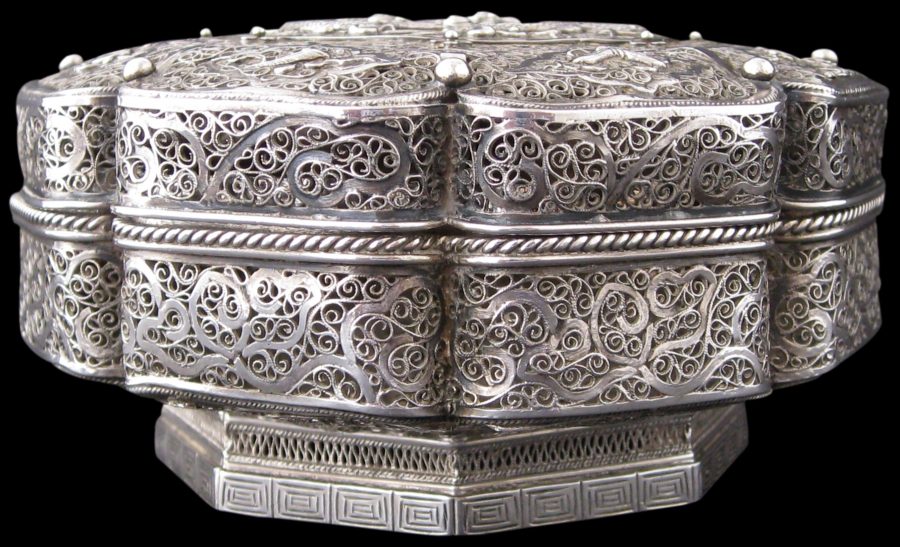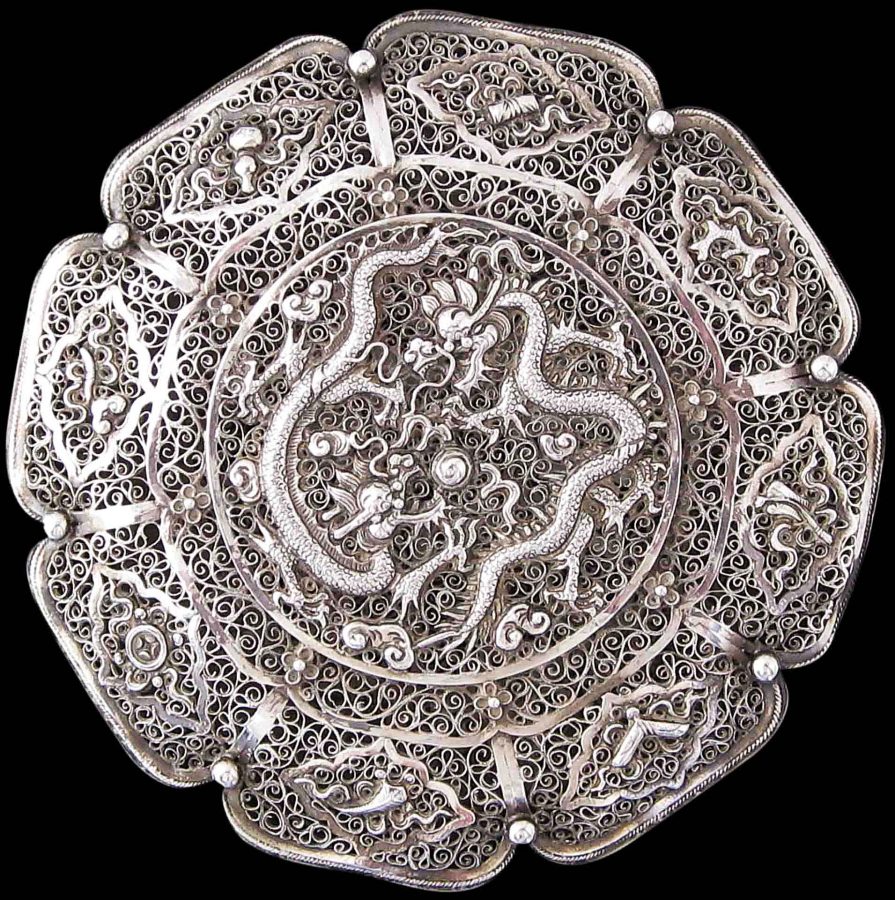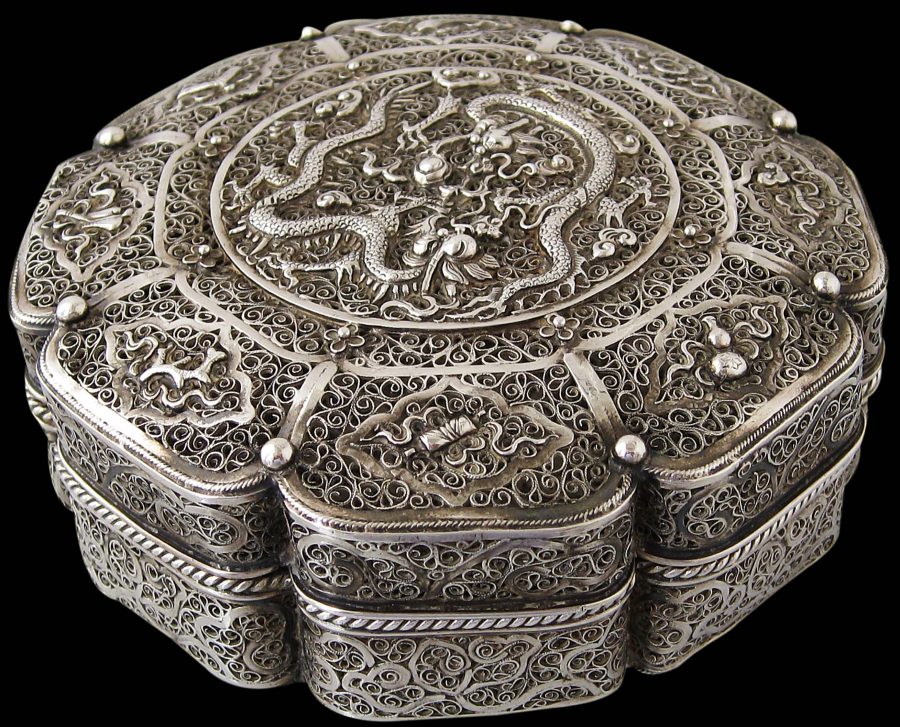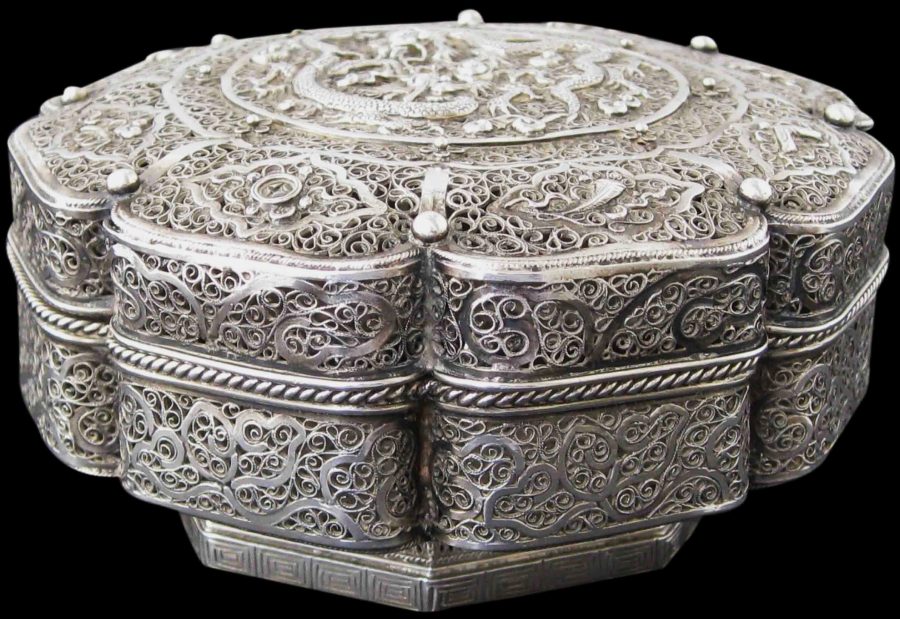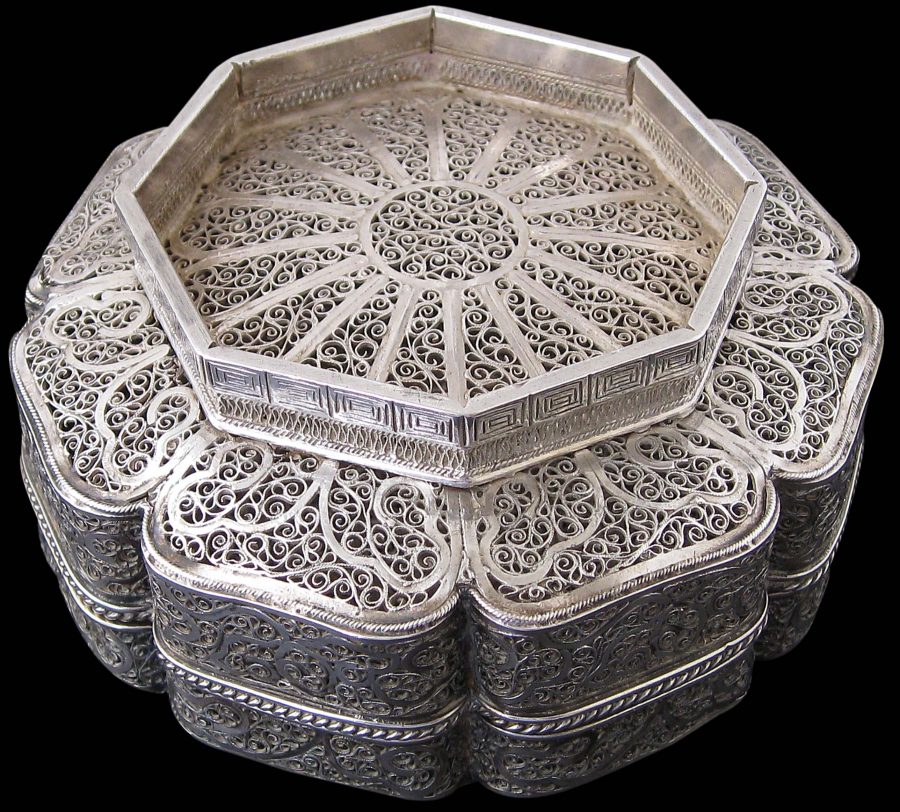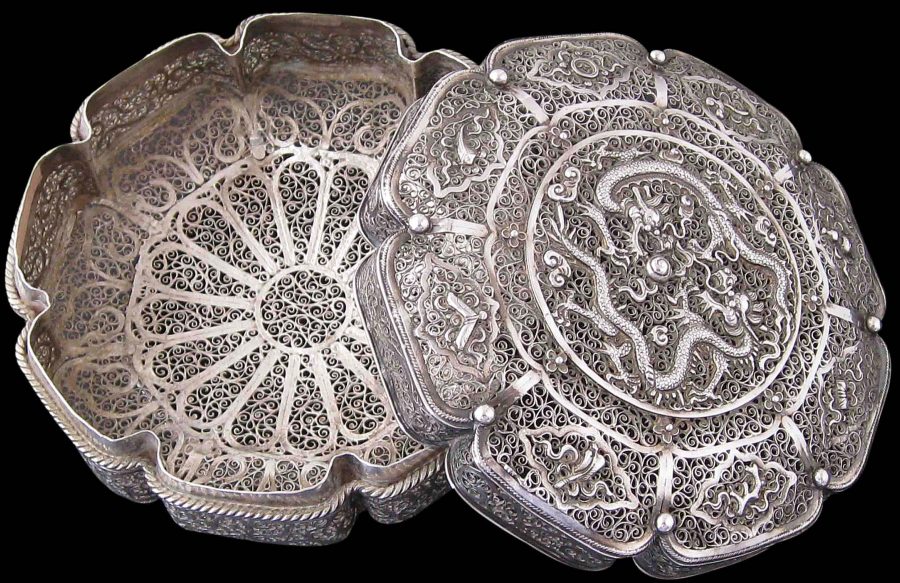This fine eight-petaled lotus form silver filigree box and cover is a superb example of eighteenth century filigree work. Possibly made in the Dutch East Indies, probably Batavia, by local Chinese silversmiths, or in China, the box retains traditional Chinese characteristics – the lotus form, and the two four-clawed dragons chasing a central flaming pearl on the cover surrounded by an outer panel containing the eight precious emblems in relief. It sits on a low octagonal foot engraved that includes a zig-zag filigree border often seen on filigree work associated with the Dutch East Indies, along with a repeated key-fret border.
An almost identical box, almost certainly made by the same hand, is in the Museum of East Asian Art, Bath, UK. The Museum’s box is illustrated in Museum of East Asian Art (1993, p. 114).
Items from filigree silver were first made for export in the seventeenth century. These earliest pieces can be linked to objects made to order for Spain and Portugal – countries in which filigree was already part of the repertoire of silver and gold smiths. The forms of these early pieces follow traditional Chinese forms – chests for Chinese scrolls, boxes and the like – just as the form of this box matches that more commonly associated with Ming cinnabar lacquer boxes and Tang silver boxes. Such filigree work was also produced for export in Batavia and Sumatra at the behest of the Dutch East India Company (VOC).
The filigree of these early types also follow the work on this box – a ribbon type with a background filled in with even finer silver wire in double curls intertwined. After the signing of the Treaty of Nerchinsk in 1689, which allowed for formal cross-border trade between China and Russia, Chinese silver was brought to Russia via embassies and trade caravans. The silver, filigree and otherwise, that was produced in Southeast Asia, tended to be brought to, and marketed in, Europe by the VOC. The Russian royal family acquired many items fashioned from Chinese silver filigree. Some of these are in the State Hermitage Museum in St Petersburg today.
The Clive Collection at Powis Castle, Wales, has two lotus petal form filigree boxes and covers that seem to be the product of Chinese silversmiths either from Southeast Asia or perhaps China. Importantly for dating purposes, these are documented as coming into the collection of Robert Clive, Baron Clive of Plassey (‘Clive of India’) around 1770. These examples are as fine as this example and have a similar lotus petal form but are without any overt Chinese decoration, being made for the Indian market.
Overall, this box is a rare, extraordinary work of art in excellent condition.
References
The Museum of East Asian Art, Inaugural Exhibition: Chinese Metalwares and Decorative Arts, Volume 2, 1993.
Menshikova, M., Silver – Wonders from the East: Filigree of the Tsars, Hermitage Amsterdam, 2006.
Treasures from India: The Clive Collection at Powis Castle, The National Trust, 1987.


